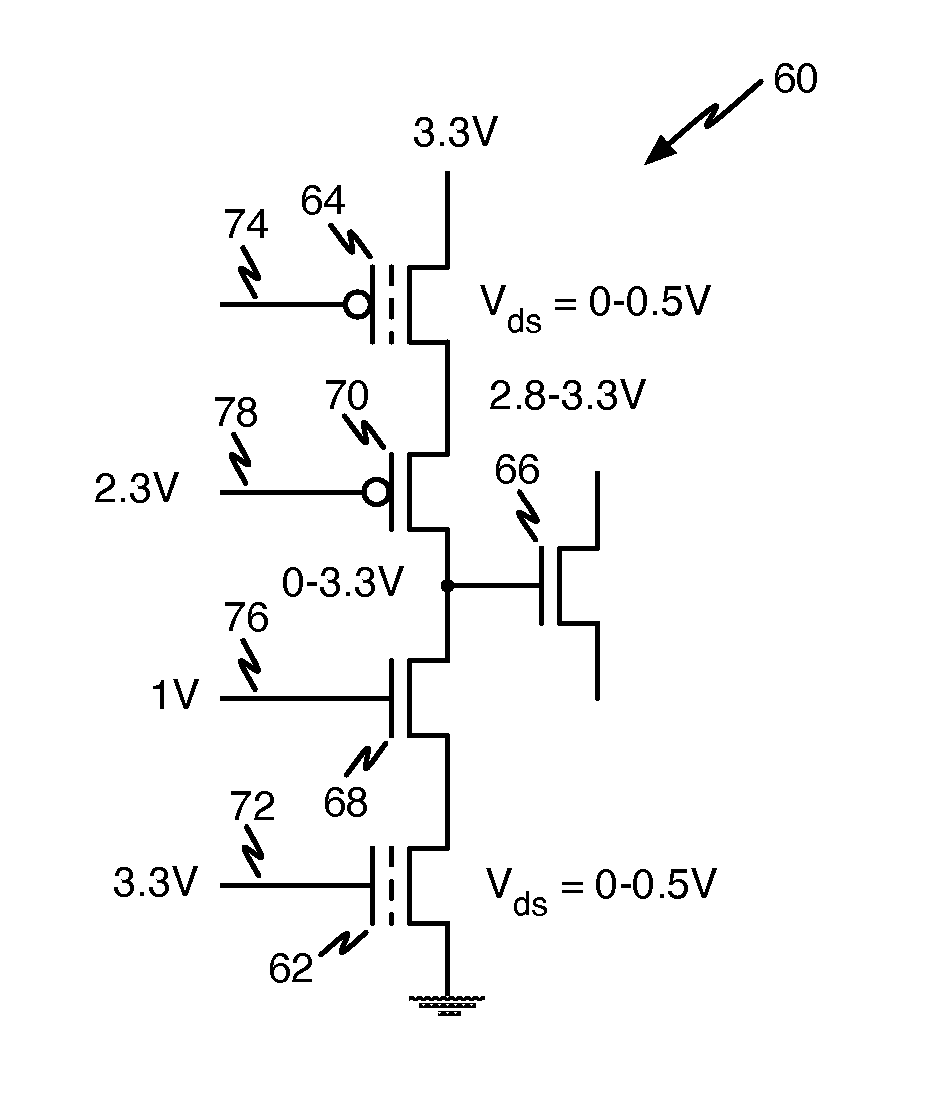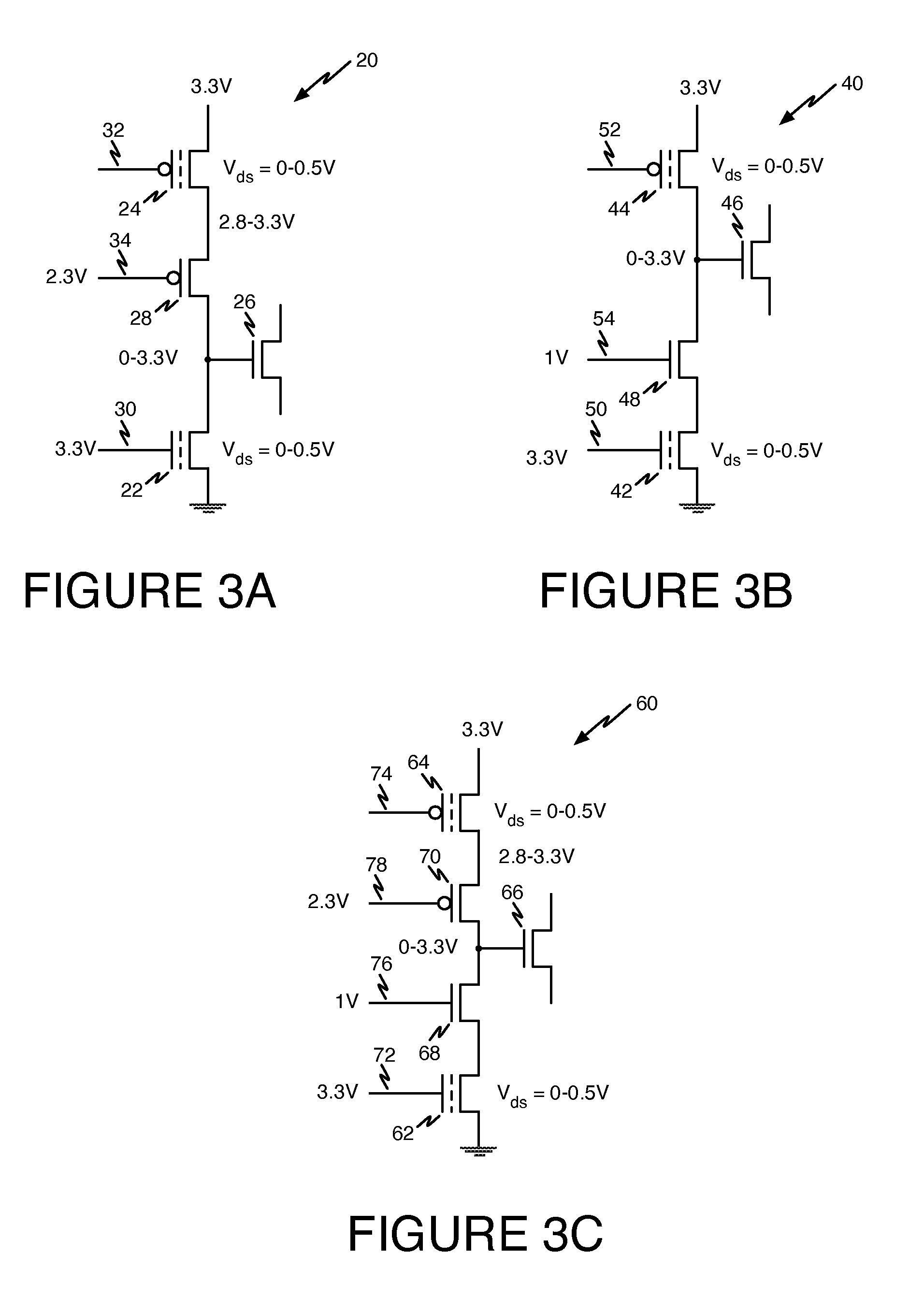Push-pull programmable logic device cell
a technology of programmable logic and push-pull, which is applied in the direction of pulse technique, logic circuit, instruments, etc., can solve the problems of product employing such a cell, off device degradation, etc., and achieve the effect of reducing stress
- Summary
- Abstract
- Description
- Claims
- Application Information
AI Technical Summary
Benefits of technology
Problems solved by technology
Method used
Image
Examples
Embodiment Construction
[0019]Persons of ordinary skill in the art will realize that the following description of the present invention is illustrative only and not in any way limiting. Other embodiments of the invention will readily suggest themselves to such skilled persons.
[0020]The problem encountered in prior-art non-volatile push-pull memory cells can be alleviated by placing at least one additional transistor in the cell order to limit the Vds of the non-volatile p-channel transistor, the non-volatile n-channel transistor, or both to around 0.5V and still allow the output to the gate of the switch transistor to be either at least a full 2.5V or even higher to fully turn on the switch transistor or at ground to fully turn off the switch transistor. In some embodiments, stress is relieved to the non-volatile p-channel transistor, the non-volatile n-channel transistor, or both.
[0021]Referring now to FIG. 3A, a schematic diagram shows an illustrative push-pull non-volatile memory cell 20 in order to sho...
PUM
 Login to View More
Login to View More Abstract
Description
Claims
Application Information
 Login to View More
Login to View More - R&D
- Intellectual Property
- Life Sciences
- Materials
- Tech Scout
- Unparalleled Data Quality
- Higher Quality Content
- 60% Fewer Hallucinations
Browse by: Latest US Patents, China's latest patents, Technical Efficacy Thesaurus, Application Domain, Technology Topic, Popular Technical Reports.
© 2025 PatSnap. All rights reserved.Legal|Privacy policy|Modern Slavery Act Transparency Statement|Sitemap|About US| Contact US: help@patsnap.com



